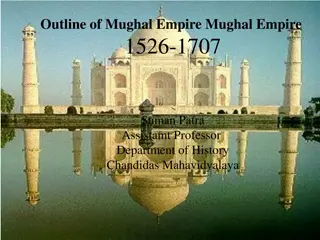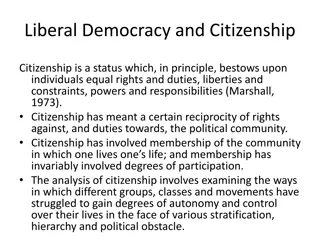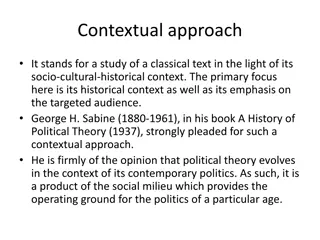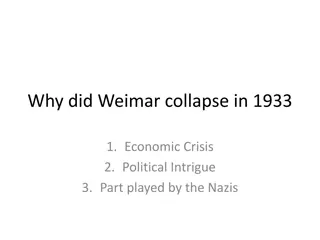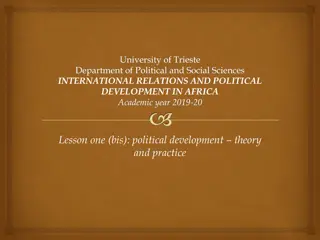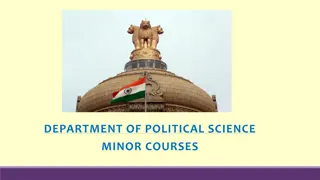Political Turmoil in Pre-Babur India
Babur, a Turkic ruler, seized power in India in the early 16th century amidst a chaotic political landscape. With weak rulers in Delhi and conflicting powers across the subcontinent, Babur's successful invasion marked a significant shift in Indian history, leading to far-reaching consequences.
Download Presentation

Please find below an Image/Link to download the presentation.
The content on the website is provided AS IS for your information and personal use only. It may not be sold, licensed, or shared on other websites without obtaining consent from the author.If you encounter any issues during the download, it is possible that the publisher has removed the file from their server.
You are allowed to download the files provided on this website for personal or commercial use, subject to the condition that they are used lawfully. All files are the property of their respective owners.
The content on the website is provided AS IS for your information and personal use only. It may not be sold, licensed, or shared on other websites without obtaining consent from the author.
E N D
Presentation Transcript
History, Degree Part-3,Paper-5,Unit-1, Topic- political condition, Dr.Md.ShakilAkhtar,lect.07,dated:20/7/2020
Babur (1483-1530) whose original name was Zahir-ud- Din Mohammad, came to be known by his pet name Babur a Turkish word which means a tiger. He belonged to Farghana, a small Kingdom in Central Asia. From 1519 to 1524, he led four expeditions to India but without any significant results. His fifth invasion which marked his success completely changed the political history of India. It had far-reaching consequences. The battle of Panipat made him virtually the ruler of entire India.
Political condition of India on the Eve of Babur s Invasion: A struggle for political supremacy among several warring powers in India was going on. Babur who had an ambition to rule India fully realized this condition and decided to try his luck. Situation is described here in brief. Delhi: Ibrahim Lodi of Lodhi dynasty, the ruler of Delhi, lacked power and political diplomacy. He had created many enemies. He was not on friendly terms with several Afghan and Turk nobles. Rana Sanga of Mewar was his worst enemy.
Punjab: Daulat Khan Lodi, the governor of Punjab distrusted Sultan Ibrahim Lodi. To settle scores with him, he invited Babur from Kabul to invade India. Sind: The province of Sind had become independent of the rule of the Delhi Sultanate. There was a good deal of confusion and lawlessness in the state.
Kashmir: Towards the end of the fifteenth century, there began a stage of anarchy in Kashmir. Mewar: Sangram Singh, popularly known as Rana Sanga, was the ruler of Mewar. He aspired to capture the throne of Delhi and Agra. He is said to have invited Babur to invade India. He was perhaps under the delusion that Babur like his ancestor Timur would invade, loot and go back to Kabul.
Political condition of Southern India was also weak: The political condition of southern India was also very deteriorating. The Bahmani kingdom ruled by muslim had broken up into five small principalities. These were-Beejapur, Golkunda, Beedar, Brar and Ahmadnagar. Another state vijay nagar kingdom ruled by hindu. These state fighting with each other.
According to Dr. Ishwari Prasad, "India was a congeries of states at the opening of the 16th century and likely to be the easy prey of an invader who had the strength and will to attempt her conquest."
Chandra, Satish:Medieval India: From Sultanat to the Mughals. New Delhi: Har- Anand Publications. 1997. https://www.historydiscussion.net/history-of- india/baburs-rule-in-india-1526-30/2768





